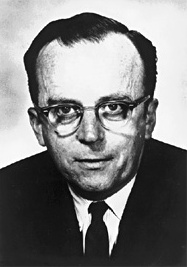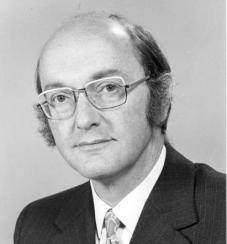
The history of the Internet has its origin in the efforts of scientists and engineers to build and interconnect computer networks. The Internet Protocol Suite, the set of rules used to communicate between networks and devices on the Internet, arose from research and development in the United States and involved international collaboration, particularly with researchers in the United Kingdom and France.

Stephen D. Crocker is an American Internet pioneer. In 1969, he created the ARPA "Network Working Group" and the Request for Comments series. He served as chair of the board of the Internet Corporation for Assigned Names and Numbers (ICANN) from 2011 through 2017.
In telecommunications, packet switching is a method of grouping data into short messages in fixed format, i.e. packets, that are transmitted over a digital network. Packets are made of a header and a payload. Data in the header is used by networking hardware to direct the packet to its destination, where the payload is extracted and used by an operating system, application software, or higher layer protocols. Packet switching is the primary basis for data communications in computer networks worldwide.

This article presents a detailed timeline of events in the history of computing from 1950 to 1979. For narratives explaining the overall developments, see the history of computing.
The Information Processing Techniques Office (IPTO), originally "Command and Control Research", was part of the Defense Advanced Research Projects Agency of the United States Department of Defense.

The Advanced Research Projects Agency Network (ARPANET) was the first wide-area packet-switched network with distributed control and one of the first computer networks to implement the TCP/IP protocol suite. Both technologies became the technical foundation of the Internet. The ARPANET was established by the Advanced Research Projects Agency of the United States Department of Defense.

Joseph Carl Robnett Licklider, known simply as J. C. R. or "Lick", was an American psychologist and computer scientist who is considered to be among the most prominent figures in computer science development and general computing history.

Bob Kahn is an American electrical engineer who, along with Vint Cerf, first proposed the Transmission Control Protocol (TCP) and the Internet Protocol (IP), the fundamental communication protocols at the heart of the Internet.

Donald Watts Davies, was a Welsh computer scientist and Internet pioneer who was employed at the UK National Physical Laboratory (NPL).

Robert William Taylor, known as Bob Taylor, was an American Internet pioneer, who led teams that made major contributions to the personal computer, and other related technologies. He was director of ARPA's Information Processing Techniques Office from 1965 through 1969, founder and later manager of Xerox PARC's Computer Science Laboratory from 1970 through 1983, and founder and manager of Digital Equipment Corporation's Systems Research Center until 1996.

SRI International's Augmentation Research Center (ARC) was founded in the 1960s by electrical engineer Douglas Engelbart to develop and experiment with new tools and techniques for collaboration and information processing.

Wesley Allison Clark was an American physicist who is credited for designing the first modern personal computer. He was also a computer designer and the main participant, along with Charles Molnar, in the creation of the LINC computer, which was the first minicomputer and shares with a number of other computers the claim to be the inspiration for the personal computer.
The CYCLADES computer network was a French research network created in the early 1970s. It was one of the pioneering networks experimenting with the concept of packet switching and, unlike the ARPANET, was explicitly designed to facilitate internetworking.

Larry Roberts was an American computer scientist and Internet pioneer.

A computer network is a set of computers sharing resources located on or provided by network nodes. Computers use common communication protocols over digital interconnections to communicate with each other. These interconnections are made up of telecommunication network technologies based on physically wired, optical, and wireless radio-frequency methods that may be arranged in a variety of network topologies.
Computer Networks: The Heralds of Resource Sharing is a short documentary film from 1972, produced by Steven King and directed/edited by Peter Chvany, about ARPANET, an early packet-switching network and one of the first networks to implement the protocol suite TCP/IP.

The NPL network, or NPL Data Communications Network, was a local area computer network operated by a team from the National Physical Laboratory (NPL) in London that pioneered the concept of packet switching.

The BBN Time-Sharing System was an early time-sharing system created at Bolt, Beranek and Newman (BBN) for the PDP-1 computer. It began operation in September 1962.
The Protocol Wars were a long-running debate in computer science that occurred from the 1970s to the 1990s, when engineers, organizations and nations became polarized over the issue of which communication protocol would result in the best and most robust networks. This culminated in the Internet–OSI Standards War in the 1980s and early 1990s, which was ultimately "won" by the Internet protocol suite (TCP/IP) by the mid-1990s when it became the dominant protocol suite through rapid adoption of the Internet.














